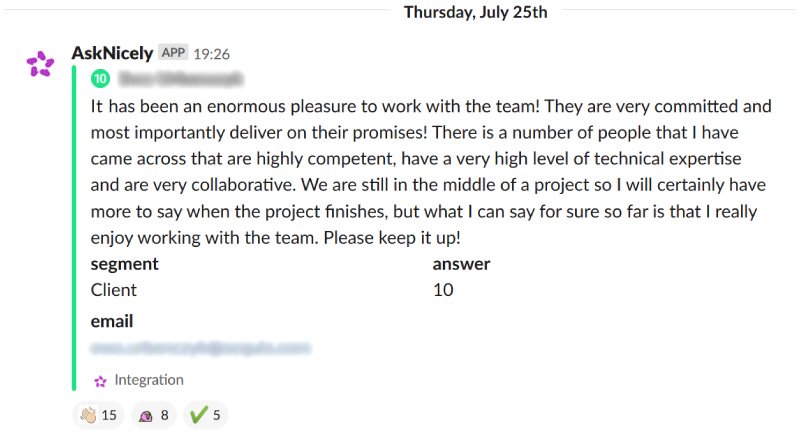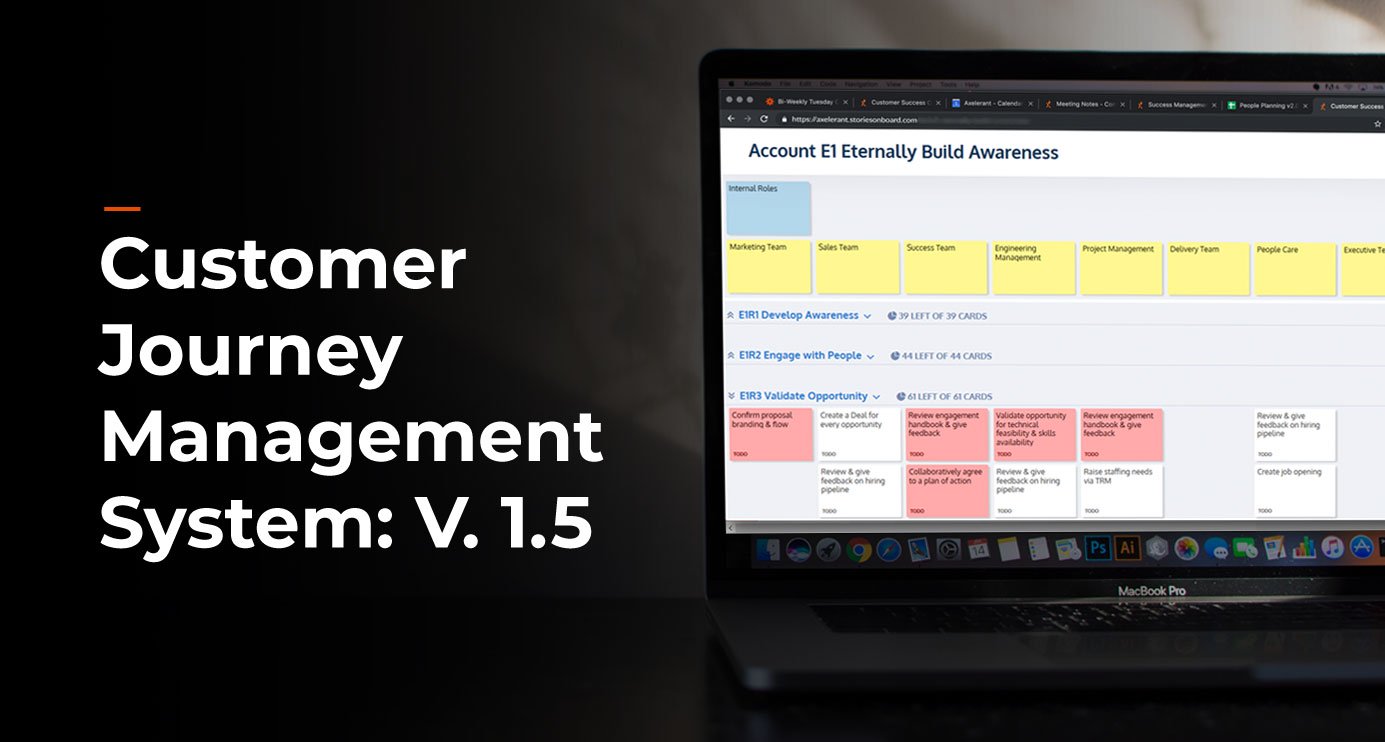Introduction
There’s a lot out there on Customer Success Management Systems. This content is all about comparing and contrasting Customer Success Management System Tools or Customer Success software. But a “CS” system should be unique to the organization, and approaching Customer Success systematically starts before a platform or the tech stack is evaluated—and with good reason. It’s more personal than that.
Gone are the days when companies could rely only on new customer acquisitions to keep their businesses up and running. Renewals and retention are equally imperative to substantial growth. With the increasing number of subscription-based software, today, long-term success is equal to customer satisfaction and loyalty.
Providing what a customer asks for can no longer be your A-game.
Lincoln Murphy has aptly said, “Customer success is about more than delivering a service or support.”
For us at Axelerant, in addition to providing service and support, Customer Success means highly engaged people, expected outcomes, and positive client experiences. What makes this possible are our always work-in-progress communication skills. Building up ‘Customer Journey Management System Version 1.5’ was an arduous journey. A journey we believe will help you make smarter decisions when putting customers’ success first.
The Need For A Customer Success Management System
Early last year, the Customer Success Management (CSM) team was determined to improve their operations and in the effort, initially came up with 50 items of interactions and artifacts related to a customer journey around a staffing engagement. These items of interactions included:
- Checklists for On-Boarding
- Off-Boarding Clients
- Support Materials from the Marketing Team
- Pitch Decks from Sales Teams
But this was short-sighted and focused on revenue, solely. Are these the only meaningful interactions we have with our partners? No. It’s so much bigger, and focused on more than revenue. It’s focused on growth.
The team dug deeper and the number of points of interactions escalated from 50 to 200 and eventually to a 700. This extensive list of 700 points covered every single aspect of staffing engagements we can isolate. But the list was complex.
These points weren’t even completely linked to each other. Our people were facing difficulties in understanding role expectations, and how team expectations varied from individual expectations. Making sense of this list and individual roles was crucial because 80 percent of the revenue comes from staffing.
Simplifying this colossal list into a usable format was the next decisive task. Should it be a checklist? Or would a guideline prove more helpful? Would a playbook come in more handy? Whatever the final material, the complex visual plan of 700 points of interaction needed to be broken down to five major epics:
- Building Awareness
- Building Confidence
- Demonstrating and Building Onboarding Trust
- Delivering Trust as Part of Execution
- Account Partnership Growth
After much contemplation and long, healthy debates, the team dropped the idea of a checklist. Checklists dictate how something gets done. And with every new client being unique in their own way, the last thing we wanted to do was create a one-size-fits-all solution for how we deal with different clients.
What we could do was create a system which would be a mixture of a guideline and a playbook for our people to have better interactions with clients and to deliver success. The purpose and the outcome of this system were clear:
The Purpose
Understand the desired outcome, and the intention behind actions.
The Outcome
Our people will be more flexible and adaptable to making the client successful.
The guideline and the playbook were a work in progress for a few months, and as a matter of fact, still are. The CSM team has successfully been using the playbook and related guidelines for two clients. The change that this brought about was eventually reflected on the JIRA board.
The outcome of the fourth sprint saw an exponential growth and was almost three times the outcome of the first sprint.
The team received direct appreciation from the client for demonstrating the effectiveness of these changes within a period as short as a month.

The CSM team is continually vigilant towards simplifying complex items. After the introduction of the playbook, which has also been "templatized" for future use with different clients or projects, people were now not investing extra time in understanding the complexities but were being more accepting and supportive towards the stakeholders. Their main focus was on #3 and #4 of the five major epics, and the playbook proved to be the perfect aid in doing so.
Axelerant Engagement PlaybookThe template that took us a step closer to client trust, truth and transparency:
|
Let’s understand what this playbook consists of:
#1 Project Team
This very first section of the playbook amasses the details of each and every team member involved in the project, irrespective of their departments. The name, role, contact details and time zones of the client-side team members are also shared in this section. This has made it extremely easy to contact the right person when needed.
#2 Project Business Objectives
This second section talks about the aim and key objectives of the project. In some cases, new team members have to be added mid-project. This section then acts as a reference bible for team members new to the project. The on-boarding process, thus, takes less than a day’s time.
#3 Roadmap (Timeline of Projects)
As the name suggests, this section details out the start date, the target date and other dates related to various milestones in the project. It also details out the number of weeks dedicated to the development and testing processes. This helps everyone get a clear picture of the bandwidth involved in the project.
The next few sections include:
- Kick-Off Resources or the On-boarding Document Links
- Any Related Video Links
- Daily Scrum Meeting Details
- JIRA Ticket Estimations
- Optimized Paid Time Off (PTO) Planning
Next, the sections discuss:
- JIRA Guidelines
- Ticket Lifecycle Guide
- Query Resolution Guide
- Task Dependency Management
- Ticket Reopen Guidelines
- Quality Testing Guidelines
- Time Log Guidelines
- Local Drupal Setup Guidelines
- QA Templates with Quality Expectation
The playbook is an evolving document for the team as every client is different and every client’s expectations and working styles are different. But this template helps the team save on the time needed to kick-start an engagement.
The team successfully used the playbook for a client in the month of July and is now using an optimized version for another client since the first week of August, 2019. With the playbook, demonstrating and building on-boarding trust as well as delivering trust as a part of execution were no longer a chore but embedded naturally into the process.
A Crucial Revelation
The demanding process of simplifying the 700 points of interactions into a working system brought forth a crucial revelation:
“The strategic advantage of Axelerant people is that we communicate better. We listen, we are empathetic, and we figure out a way forward.” - Michael Cannon, Chief Success Officer
Trust, truth and transparency are the principles that have helped the team first have small, hard conversations and then big, hard conversations as a team.
This revelation also resulted in a new recruitment questionnaire promoting Axelerant’s tentative scenario for skills demonstration by project managers and success managers.
The next aspects that are a work in progress for the CSM team are mindfulness and time optimization, the lack of which forced our team to work even on the weekends. If you're curious to learn more, drop us a line.

Sharayu Thakare, Director Of People Care
A dog-mom, she can eat a whole tub of ice cream in one sitting and has an impressive collection of superhero figurines by her desk. She's crazy about fan fiction, and can't stand the thought of driving.

 We respect your privacy. Your information is safe.
We respect your privacy. Your information is safe.




Leave us a comment